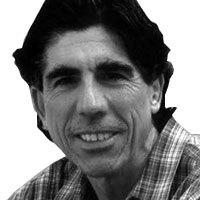In 1946 John Kennedy, running for the House of Representatives for the first time, made a point of reaching out to veterans’ groups during his campaign. The speech Kennedy, a World War II-Navy hero, gave to his fellow vets is not well-known, but this Memorial Day, in a year that marks the 70th anniversary of that speech, Kennedy’s words are worth recalling for the picture they paint of vets like himself who saw their military experience carrying over to peacetime.
Without fear of being thought sentimental, let alone a war lover, Kennedy spoke openly of the letdown vets often felt on returning home. “I have seen it in many of their faces. I have heard many of them mention it—the realization that home was not what it was ‘cracked up to be,’” he recalled. “They miss the close comradeship, the feeling of interdependence, that sense of working together for a common cause.”
As a veteran who was not yet 30 in 1946, Kennedy did not have to ask himself what other vets were thinking. He felt it in his bones. When he talks about many vets having a hard time adjusting to post-World War II civilian life, it is empathy, not sympathy, that comes through in his words.
ADVERTISEMENT
His speech has a hero, the badly burned Patrick McMahon, the engineer on Kennedy’s PT-109 boat, which was sunk by a Japanese destroyer in 1943 during a nighttime battle in the Pacific. But the speech is not a reprise of John Hersey’s 1944 New Yorker account of the sinking of PT-109 and the rescue of its surviving crewmen. Kennedy never mentions the role he played in saving McMahon’s life by towing him to shore in a five-hour swim.

The premise on which Kennedy’s speech rests is that World War II was terrifying but it brought out a selflessness in those fighting it that made them different from who they were before the war. As Kennedy put it, “Men were saving other men’s lives at the risk of their own simply because they realized that perhaps the next day their lives would be saved in turn. And so there was built up during the war a great feeling of comradeship and fellowship and loyalty.”
For Kennedy, it followed that the bonds the war established among vets often went deeper than even their loved ones could understand. “One veteran told me that that when he brought one of his Army friends to his home, his wife said, ‘What can you possibly see in O’Brien?’” Kennedy recalled. “The veteran remembered O’Brien in Italy, walking with him from Sicily to the Po Valley, every bloody mile of the way. He knew what he could see in O’Brien.”
Keeping such a memory alive was, in Kennedy’s eyes, a way of honoring shared sacrifice. The final point of his speech is that the values the war instilled in those who fought it should not be left on the battlefield. Such values deserved a second life in peacetime. The postwar world could, Kennedy thought, be shaped so that it continued the bonds the vets established among themselves as a result of the dangers they had faced in combat. “We must work together,” Kennedy observed just before the end of his speech. “We must recognize how interdependent we are. We must have the same unity that we had during the war.”
Much of this speech can be found in Johnny, We Hardly Knew Ye, a memoir of Kennedy based on the recollections of two of his closest aides, Kenneth O’Donnell and Dave Powers, but it’s no wonder that over the years this particular Kennedy speech has gained so little attention. It contains none of the soaring rhetoric of Kennedy’s presidential inaugural or his 1963 Berlin Wall speech. There are not even policy proposals in the speech that would explain Kennedy’s later political success. Like the classic, coming-home movie of 1946, The Best Years of Our Lives, Kennedy’s speech is in the end too earnest to be artful.
But there are times when earnestness matters most in a speech, and Memorial Day is one such time. Like his fellow vets, Kennedy had been a speck in a Word War II military in which 16 million served, but it buoyed him to think of the impact so many of them could have on the country.
Nicolaus Mills is professor of American studies at Sarah Lawrence College and author of Their Last Battle: The Fight for the National World War II Memorial.






